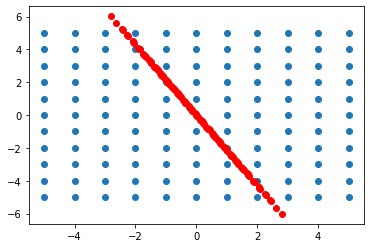Visualization of La Palma Earthquake Data¶
Using the subset of IGN data specific to La Palma. This subset was prepared using screening.ipynb and saved to lapalma.csv.
import pandas as pd
import altair as alt
alt.data_transformers.enable('default', max_rows=None)
import numpy as npdf = pd.read_csv('./lapalma.csv')df['Datetime'] = (df['Date'] + ' ' + df['UTC time']).apply(pd.to_datetime, format='%Y-%m-%d %H:%M:%S')
df.head()Loading...
df.describe()Loading...
df['Depth'] = 'Crustal (<20km)'
df.loc[df['Depth(km)'] >= 20, 'Depth'] = 'Mantle (>20km)'brush = alt.selection_interval(encodings=['x'])
bars = alt.Chart(df, width=700, height=150).mark_bar().encode(
x=alt.X('Date:T', axis=alt.Axis(labelAngle=-45)),
y=alt.Y('count():Q', title='Number of Events', axis=alt.Axis(labelAngle=-45)),
color=alt.condition(brush, 'Depth:N', alt.value('lightgray'))
).properties(
title='Earthquake event magnitude since 11 Sep 2021'
).add_selection(
brush
)
detail_scatter = alt.Chart(df, width=700, height=350).mark_circle(opacity=0.3, strokeOpacity=1.0).encode(
x=alt.X('Datetime:T', axis=alt.Axis(labelAngle=-45)),
y=alt.Y('Depth(km):Q', axis=alt.Axis(labelAngle=-45),scale=alt.Scale(domain=[45, 0])),
color=alt.condition(brush, 'Depth:N', alt.value('lightgray'), scale=alt.Scale(scheme='category10')),
size=alt.Size('Magnitude:Q', scale=alt.Scale(type='log', domain=[1.5,6], range=[2,200]))
).properties(
title='Number of Earthquakes per day since 11 Sep 2021'
).transform_filter(brush)
detail_scatter & barsLoading...
brush = alt.selection_interval(encodings=['x'])
bars = alt.Chart(df, width=700, height=150).mark_bar().encode(
x=alt.X('Date:T', axis=alt.Axis(labelAngle=-45)),
y=alt.Y('count():Q', title='Number of Events', axis=alt.Axis(labelAngle=-45)),
color=alt.condition(brush, 'Depth:N', alt.value('lightgray'))
).properties(
title='Number of Earthquakes per day since 11 Sep 2021'
).add_selection(
brush
)
detail_scatter = alt.Chart(df, width=700, height=500).mark_circle(opacity=0.3, strokeOpacity=1.0).encode(
x=alt.X('Magnitude:Q', title='magnitude', axis=alt.Axis(labelAngle=-45), scale=alt.Scale(domain=[1.5, 6])),
y=alt.Y('Depth(km):Q', axis=alt.Axis(labelAngle=-45),scale=alt.Scale(domain=[45, 0])),
color=alt.condition(brush, 'Depth:N', alt.value('lightgray')),
size=alt.Size('Magnitude:Q', scale=alt.Scale(type='log', domain=[1.5,6], range=[2,200]))
).properties(
title='Number of Earthquakes per day since 11 Sep 2021'
).transform_filter(brush)
detail_scatter & barsLoading...
brush = alt.selection_interval(encodings=['x'])
total_width = 1200
scatter_height = 500
bars = alt.Chart(df, width=total_width, height=150).mark_bar().encode(
x=alt.X('Date:T', axis=alt.Axis(labelAngle=-45)),
y=alt.Y('count():Q', title='Number of Events', axis=alt.Axis(labelAngle=-45)),
color=alt.condition(brush, 'Depth:N', alt.value('lightgray'))
).properties(
title='Number of Earthquakes per day since 11 Sep 2021'
).add_selection(
brush
)
detail_scatter_long = alt.Chart(df, width=total_width/2, height=scatter_height).mark_circle(opacity=0.3, strokeOpacity=1.0).encode(
x=alt.X('Longitude:Q', title='Longitude', axis=alt.Axis(labelAngle=-45),scale=alt.Scale(domain=[-18, -17.7])),
y=alt.Y('Depth(km):Q', axis=alt.Axis(labelAngle=-45),scale=alt.Scale(domain=[45, 0])),
size=alt.Size('Magnitude:Q', scale=alt.Scale(type='log', domain=[1.5,6], range=[2,200]))
).properties(
title='Number of Earthquakes per day since 11 Sep 2021'
).transform_filter(brush)
detail_scatter_lat = alt.Chart(df, width=total_width/2, height=scatter_height).mark_circle(opacity=0.3, strokeOpacity=1.0).encode(
x=alt.X('Latitude:Q', title='Latitude', axis=alt.Axis(labelAngle=-45),scale=alt.Scale(domain=[28.4, 28.7])),
y=alt.Y('Depth(km):Q', axis=alt.Axis(labelAngle=-45),scale=alt.Scale(domain=[45, 0])),
color=alt.Color('Magnitude:Q'),
size=alt.Size('Magnitude:Q', scale=alt.Scale(type='log', domain=[1.5,5], range=[2,200]))
).properties(
title='Number of Earthquakes per day since 11 Sep 2021'
).transform_filter(brush)
( detail_scatter_long | detail_scatter_lat ) & barsLoading...
import math
import matplotlib.pyplot as plt
angle_to_north = -25*(math.pi/180)
s = np.array([math.sin(angle_to_north), math.cos(angle_to_north)])
def project(sn, x):
return sn * (np.dot(x, sn) / np.dot(sn, sn))
lat = np.linspace(-5, 5, 11)
lng = np.linspace(-5, 5, 11)
# full coorindate arrays
llng, llat = np.meshgrid(lng, lat, indexing='xy')
plt.scatter(llng, llat)
points = np.stack((llng.flatten(),llat.flatten()), axis=1)
ppts = [project(s,points[n,:]) for n in range(0,points.shape[0]) ]
llng, llat = np.stack(ppts, axis=1)
plt.scatter(llng, llat, color='r')
# remote geojson data object
url_geojson = 'https://raw.githubusercontent.com/mattijn/datasets/master/two_polygons.geo.json'
data_geojson_remote = alt.Data(url=url_geojson, format=alt.DataFormat(property='features',type='json'))
# chart object
alt.Chart(data_geojson_remote).mark_geoshape(
).encode(
color="properties.name:N"
).project(
type='identity', reflectY=True
)Loading...